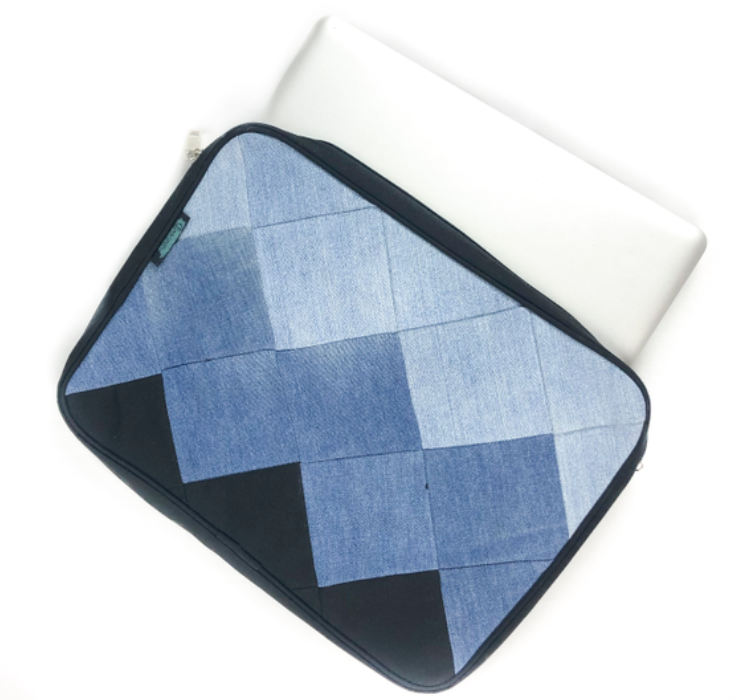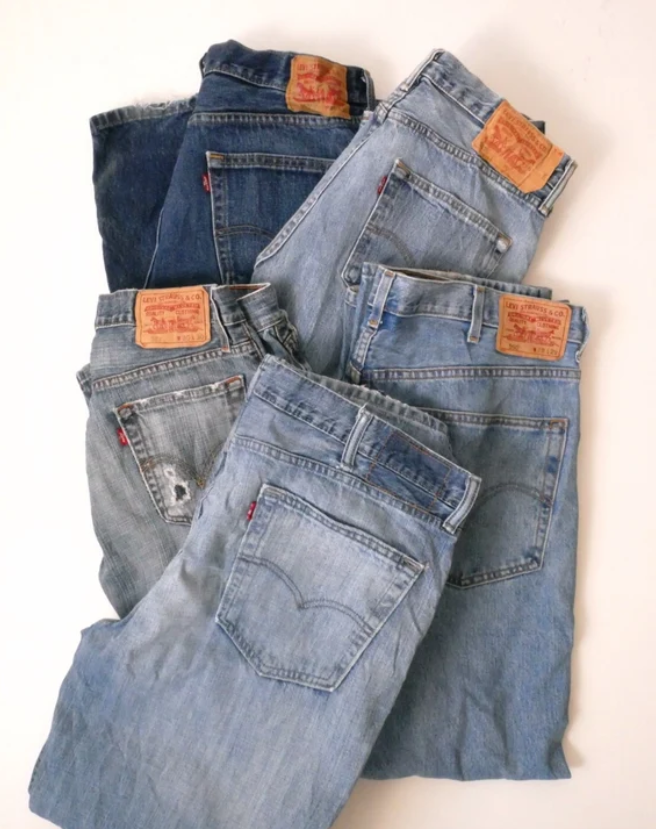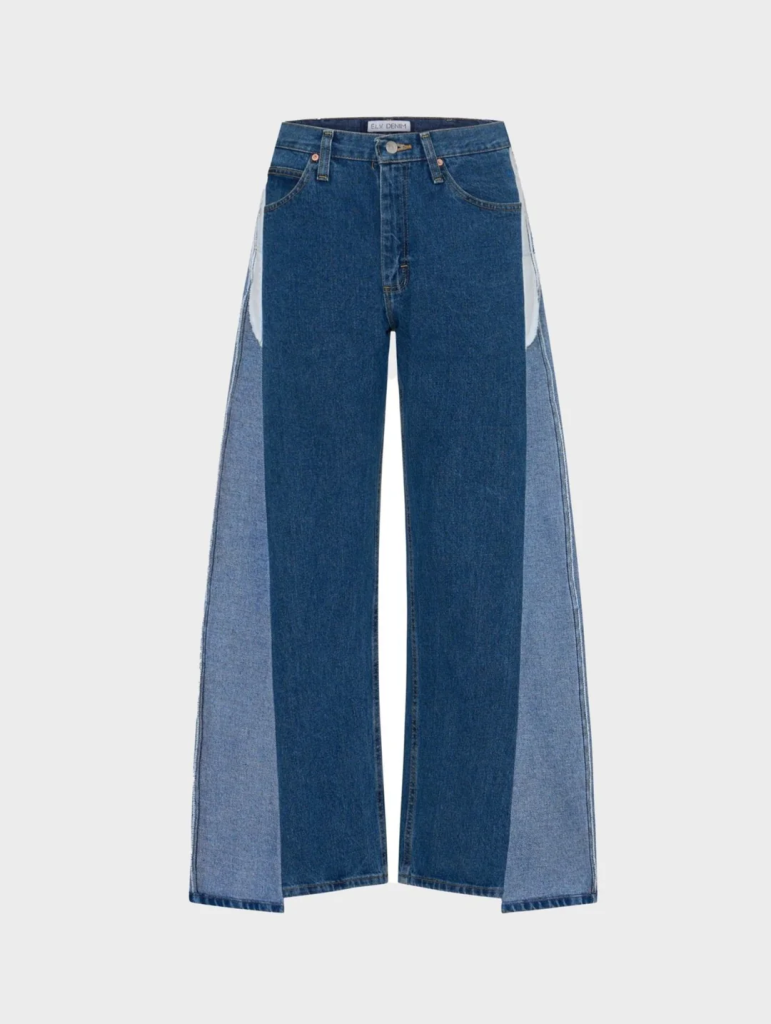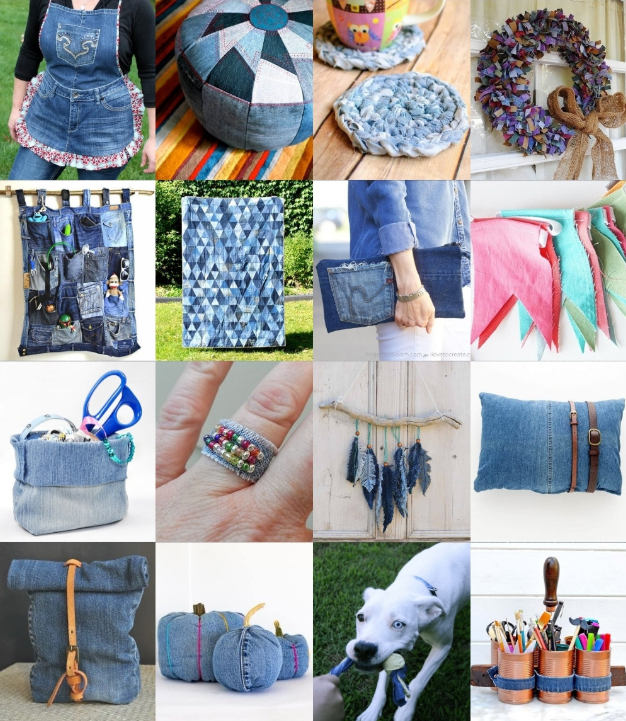Stacks of retired jeans in your closet aren’t trash but they’re a ticket to denim reinvention that spares the 3,781 liters of water it takes to make a single new pair of jeans.
Turning those fibers into sustainable crafting ideas like no-sew tote bags, patch-work floor cushions, or slip-covers chips away at the 92 million tons of textile waste the fashion industry dumps each year.
The upshot? Creative denim transformations don’t just freshen your style; they cut carbon, save cash, and keep sturdy cotton cycling for decades. Stick around, because the next steps break down easy, budget-friendly projects that let you get hands-on with eco-friendly fashion DIY without a single trip to the fabric store.
The Powerful Benefits of Upcycling Denim
Turning faded jeans into laptop sleeves or braided rugs folds them into sustainable textile projects that lighten fashion’s footprint while flexing your creativity.

Every re-stitched pocket fuels denim waste reduction, keeping tough cotton in circulation instead of the dump. Better yet, repurposed denim is ideal for economical crafting but often resell for artisan prices once they’re reborn.
Choosing upcycled indigo over fresh threads becomes a quiet pledge for eco-conscious fashion choices, cutting demand for pesticide-laden cotton and the energy-hungry processes behind brand-new jeans.
Where to Find and How to Choose Ideal Denim for Upcycling
Need fresh denim for that patch-work tote or paneled jacket? Start with denim sourcing tips: raid your own closet, then scour charity racks for quick thrift store finds, and carve out a morning at flea or rag markets to unearth vintage denim treasures like classic Levi’s 501s that were built to last.

When you’re selecting denim fabrics, flip the label and look for rigid, 100% cotton weaves in the 10 to 14 ounce range handle structure-heavy projects best, while pieces with about 2% Lycra flex nicely for garments; steer clear of threadbare knees, deep oil stains, or overly stretch-worn spots that weaken seams.
Give each pair a tug at the waistband, check for even fading, and don’t shy away from men’s sizes because the extra yardage means more patch panels and fewer joins. A quick cold wash sets any lingering dyes, and you’re ready to cut, stitch, and turn those second-life blues into something new.
Author’s Note: Check out our Wardrobe Decluttering Guide for organization tips which can help you find materials in your closet for your next upcycling project!
Preparing and Treating Denim for Your Projects
Those thrift-store jeans are about to start a new chapter but first comes a fabric refresh. Begin with a cold-water wash using mild detergent; add a splash of distilled white vinegar to the last rinse to lock in color and clear residue, then let the denim air-dry flat for wrinkle-free panels, classic fabric cleaning techniques.
An overnight soak in baking-soda water knocks out stubborn odors, setting the stage for solid denim fabric preparation. Hold each leg to the light; frayed seams, pin-sized holes, and zipper hiccups get reinforced with a quick patch or sashiko stitch, effectively treating recycled textiles for longer life.
Snip away bulky hardware like rivets, belt loops, and back-pocket buttons so scissors and needles stay safe once cutting begins. A light steam press relaxes the weave, leaving a smooth canvas and ticking off the final boxes on the essential denim pre-crafting steps checklist.
Stylish DIY Clothing Projects from Repurposed Denim
Too many jeans stacking up? Grab a pair and cut along the inseams and suddenly you’ve got an A-line wrap skirt, no fancy tools, just classic twill doing the heavy lifting.

A couple of contrasting pairs give enough fabric for a cropped trucker jacket or casual shorts, while every scrap flips into patch squares for edgy shoulder yokes or knee panels.
That’s denim clothing DIY at its best: turning throwaways into personalized fashion crafts. Swap dull buttons for vintage brass, slide in a bright zipper, and chalk up one more win for wardrobe repurposing that screams patchwork denim fashion from topstitch to hem.
Unique and Functional Home Décor Projects with Denim
You can turn your pair of blown-out jeans into punchy cushion covers by slicing the knee panels, leaving the seams for built-in piping, then let the washer work up a relaxed fray.

Flip the back pockets onto a canvas board for wall art that doubles as a mail catcher; stitch two leg strips hem-to-hem to craft a runner sturdy enough for spaghetti night yet casual enough for brunch; and twist thumbnail-sized scraps into rope bowls that never sag under keys or sewing notions.
These are bold denim home accessories that prove budget-smart recycled fabric decor and bite-size sustainable interior projects can load every corner with personality, all wrapped up as brag-worthy handmade denim accents friends will rush to copy.
Creative Accessories Crafted from Old Denim
Turn cast-off denim into standout gear by transforming leg panels into roomy cross-bodies or festival-ready belt pouches for quick, low-cost projects that tick both style and eco boxes and nail those denim accessory ideas you keep bookmarking.

Pocket scraps morph into floppy sun hats, while braided seams work as planet-friendly belts; leftover rivets and frayed selvedge wrap wooden beads for handmade denim jewelry that mixes indigo texture with up-cycled metal findings.
Each upcycle slashes textile waste, delivering sustainable fashion extras that sidestep the carbon load of virgin fabric, and those roomy totes prove recycled denim bags can outlast trends as everyday carry-alls.
Overcoming Common Upcycling Challenges with Denim
Needle breakage, lumpy seams, and patches that pop off can frustrate any upcycler. Reliable denim crafting solutions include pairing a size 90/14 or 100/16 jeans needle with a walking foot so thick layers feed smoothly.
When a bulky hem stalls the machine, slip a folded denim scrap behind the presser foot to level the height, then stitch through. Irregular fade lines become design assets by cutting panels on the bias, mixing light-and-dark pieces, and chalking each segment before slicing which are simple fabric upcycling tips that cut guesswork.
For worn knees or seats, press lightweight fusible interfacing under thin spots, top-stitch a matching patch that aligns the twill, and extend a garment’s lifespan. A running notebook of every snag and remedy quickly grows into personalized textile crafting challenges and DIY troubleshooting guides ready for the next denim project.
Real-Life Inspiration: Denim Upcycling Success Stories
Running low on motivation? Scan what fellow makers have already pulled off. denim crafting case studies pile up fast: London’s ELV Denim slices cast-off jeans into chic two-tone trousers while slashing water use.

Across the pond, Atelier & Repairs links with Candiani to rebuild “Re-Gen” fabric, half recycled cellulose, half reclaimed cotton, into limited jackets that tap zero new threads. These inspiring DIY examples sit beside Wrangler’s Reborn line, where surplus Greensboro and Icon pieces get de-stitched and recut through Beyond Retro, keeping thousands of garments out of landfills.
With these, you’ve got successful upcycling stories proving durability can trump disposability. Taken together, they fuel real community crafting inspiration: every hem, patch, and rivet shows that a little creativity plus a respect-the-planet mindset can spin tired denim into fresh wardrobe or décor wins without touching new fabric.
Embracing a Sustainable Lifestyle with Upcycled Denim
Turning forgotten jeans into tote-bags, cushion covers, or braided plant-hangers sparks an eco-fashion lifestyle that quietly cuts fashion’s hefty appetite for water and energy.

Simple sustainable wardrobe ideas, from patching knees with contrasting scraps to weaving denim coasters, extend a garment’s life instead of feeding landfills and keep dye runoff out of rivers.
Every upcycled project models mindful consumer practices, trading impulsive clicks for hands-on creativity, and the rising demand for artisan denim pieces shows how individual efforts can nudge whole communities toward green living crafts and a lighter environmental footprint.
Author’s Note: Check out our post Upcycled Clothing Ideas for Fresh Fashion for even more inspiration to turn old garments into unique, sustainable style!
Conclusion: Your Creative Journey to Sustainable Style with Denim
Need fresh jeans-to-pillow inspiration? Turning yesterday’s skinnies into tomorrow’s floor cushion bundles up sustainable creative expression, hands-on eco-conscious crafting, and real-world impact: denim production still consumes massive amounts of water and fuels a significant share of fashion’s global CO₂ output.
Each stitch you add writes a quiet story of denim style reinvention and proves that responsible fashion choices don’t require buying anything new just a pair of sharp scissors, a bit of thread, and your own flair.


